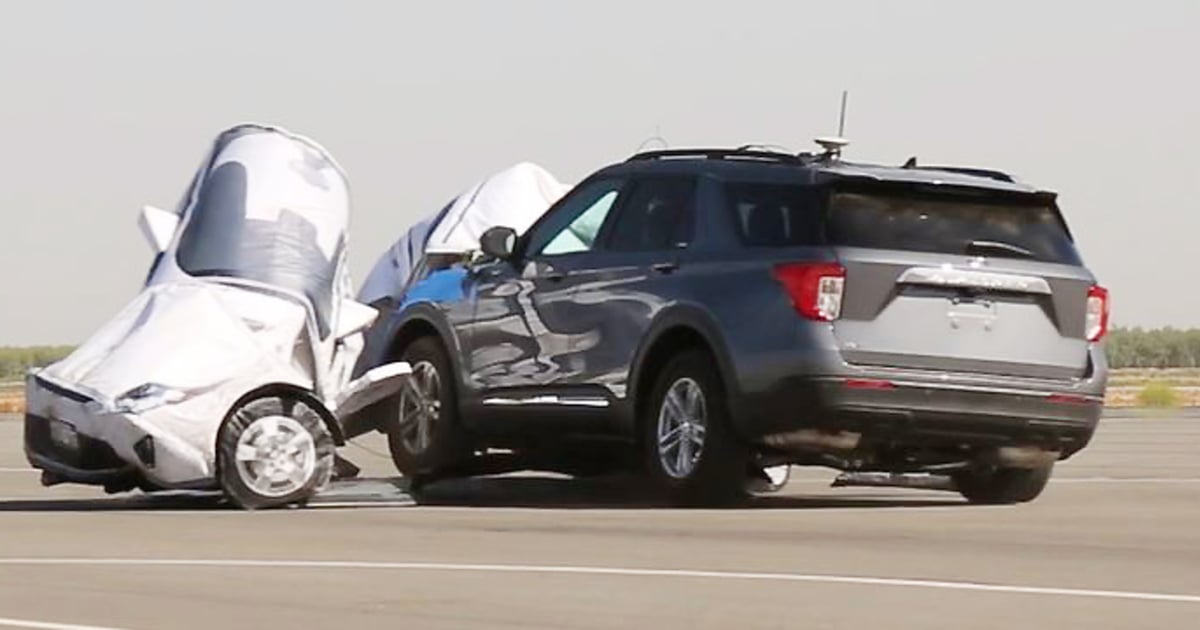
Advanced Driver Assistance Systems could prevent nearly 250,000 U.S. road deaths over the next 30 years, according to a study funded by the AAA Foundation for Traffic Safety.
Research performed by the University of North Carolina Highway Safety Research Center found that the technology, which includes features such as automatic emergency braking and blind spot alerts, also would prevent approximately 37 million crashes and 14 million injuries from 2021 to 2050.
That would represent 16 percent of crashes and injuries and 22 percent of deaths that would occur on U.S. roads without the technologies. AAA said.
The research suggests “that ADAS have the potential to transform road safety,” David Yang, the AAA Foundation executive director, said in a statement.
The AAA research tracks with insurance industry findings.
Automatic emergency braking reduces front-to-rear crashes with injuries by 56 percent compared with vehicles lacking the technology, according to the Insurance Institute for Highway Safety. Blind spot warning cut lane-change crashes with injuries by 23 percent.
“As the technologies improve, we expect to see the crash reductions grow. For example, we’re currently working on updates to our vehicle-to-vehicle front crash prevention evaluation that will push automakers to improve those systems to work at higher speeds and more scenarios,” IIHS spokesperson Joseph Young told Automotive News.
About 23 percent of registered vehicles are equipped with front automatic emergency braking. According to the institute, that’s expected to grow to 47 percent by 2027. Blind spot warning is on 25 percent of vehicles now but will increase to a predicted 48 percent in the same time frame.
“However, the full safety benefits of ADAS will not be realized unless they are fully understood by the consumer, used properly, and widely adopted,” Yang said.
Although the technology has significant safety potential, confusion over its use and even how it is named hamper the ADAS efficacy, AAA officials said.
Many drivers, for example, lack the knowledge to properly use adaptive cruise control, which allows a vehicle to change speeds with traffic automatically.
AAA said that can lead to misuse or mistrust, especially in edge-case situations beyond the system’s capability.
In another example, automatic emergency braking has proven effective in reducing front-to-rear crashes between cars but is less effective in stopping vehicle collisions with pedestrians and bicyclists. It’s also less effective in preventing T-bone crashes and left-turn crashes in front of an oncoming vehicle, according to AAA tests.
“The future for ADAS is bright, but it’s not a cure-all,” said Jake Nelson, AAA’s director of traffic safety advocacy. “While these technologies offer substantial safety benefits, we cannot engineer our way out of traffic injuries and deaths on U.S. roads.”
The AAA forecast of lives saved and injuries prevented came from a model developed by researchers at the University of North Carolina. They estimated future safety benefits of collision warning systems, automatic emergency braking, adaptive cruise control, and dynamic driving assistance systems installed on all light vehicle body styles.
It derived estimates using crash data from 2017–2019 plus an annual increase because of increasing vehicle travel.
The AAA report cautioned that they “are subject to substantial uncertainty.”
It said, “the future real-world safety benefits of ADAS will be influenced by many factors, including the rates of uptake, use, and development of these technologies.”
High uptake and use would increase the benefits. But if the technology moves into the registered vehicle population slowly, or drivers use settings to opt out of the technology, ADAS will be less effective.
And AAA said that even in the most optimistic scenario, crashes would remain a serious problem. “More than 73 million people would still be injured and nearly 850,000 would still die in crashes over the same 30-year period,” the report said.
The study considered the following technologies as part of the ADAS suite of features, estimating the on-the-road mix during the time frame.
- Blind spot warning: Detects vehicles to rear in adjacent lanes while driving and alerts drivers to their presence.
- Pedestrian detection: Detects pedestrians in front of vehicles and alerts drivers to their presence.
- Lane departure warning: Monitors the vehicle’s position within the driving lane and alerts the driver as the vehicle approaches or crosses lane markers.
- Forward collision warning: Detects impending collision while traveling forward and alerts the driver.
- Adaptive cruise control: Controls acceleration and braking to maintain a prescribed distance from the vehicle in front.
- Automatic emergency steering: Detects potential collision and automatically controls steering to avoid or lessen the severity of impact.
- Forward automatic emergency braking: Detects potential collisions while traveling and automatically applies brakes to avoid or lessen the severity of impact.
- Lane-keeping assistance: Controls steering to maintain the vehicle within the driving lane. It may prevent the vehicle from departing the lane or continually center the vehicle.
- Dynamic driving assistance: Controls vehicle acceleration, braking, and steering. SAE standard definition of Level 2 driving automation systems outlines this functionality.